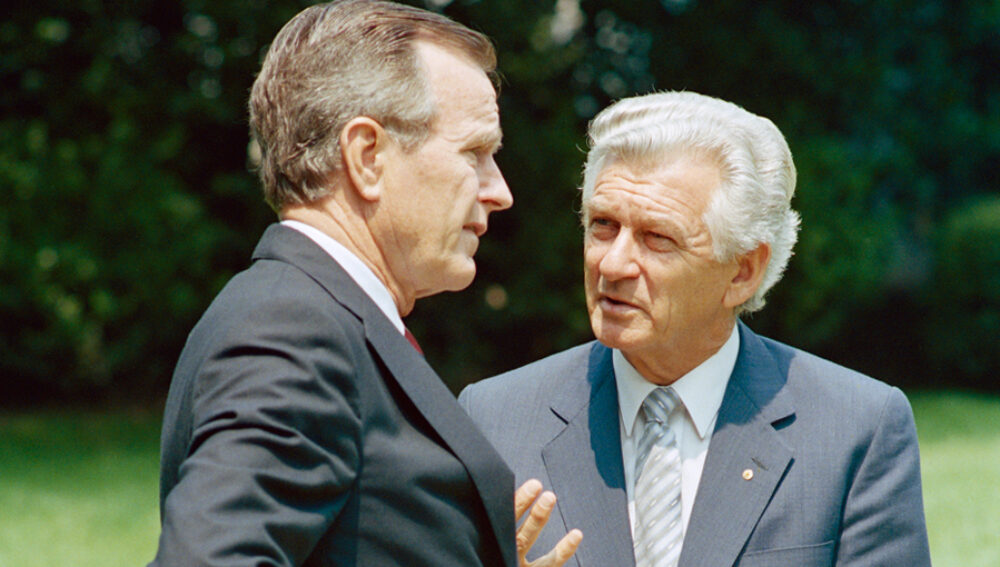The Hawke Government came to power in March 1983 during a turbulent period in international affairs. The world was in the grip of a second Cold War between the US and USSR and the existential threat of nuclear war remained a daily reality for policy makers and citizens. Australia had barely recovered from a major global recession and the outlook for international institutions — crucial for smaller states in world politics — was highly uncertain.
Like all new Prime Ministers, Bob Hawke found that foreign policy was a domain where executive government could realise its policy agenda largely untrammelled by legislative interference. The leitmotif of the Hawke Government’s foreign policy was Australia as a constructive global middle power pursuing its national interest through responsible international citizenship. The Fraser and Whitlam Governments had developed this theme, but the Hawke Government injected greater policy substance, as well as diplomatic resources, into raising Australia’s profile as a force for positive change in multilateral fora — from the UN to the South Pacific Forum.
Pursuing “niche” diplomacy in areas as diverse as arms control, trade liberalisation, the environment, and human rights, under the stewardship of Hawke and Foreign Ministers Bill Hayden (1983–88) and Gareth Evans (1988–91/96), Australia’s capacity to influence policy outcomes in multilateral settings reached a peak that we have not witnessed since.
Please click here to read the full “Hawke on foreign policy” article published at the Policy Innovation Hub’s Machinery of Government, written by Griffith Asia Institute member, Professor Andrew O’Neil.








